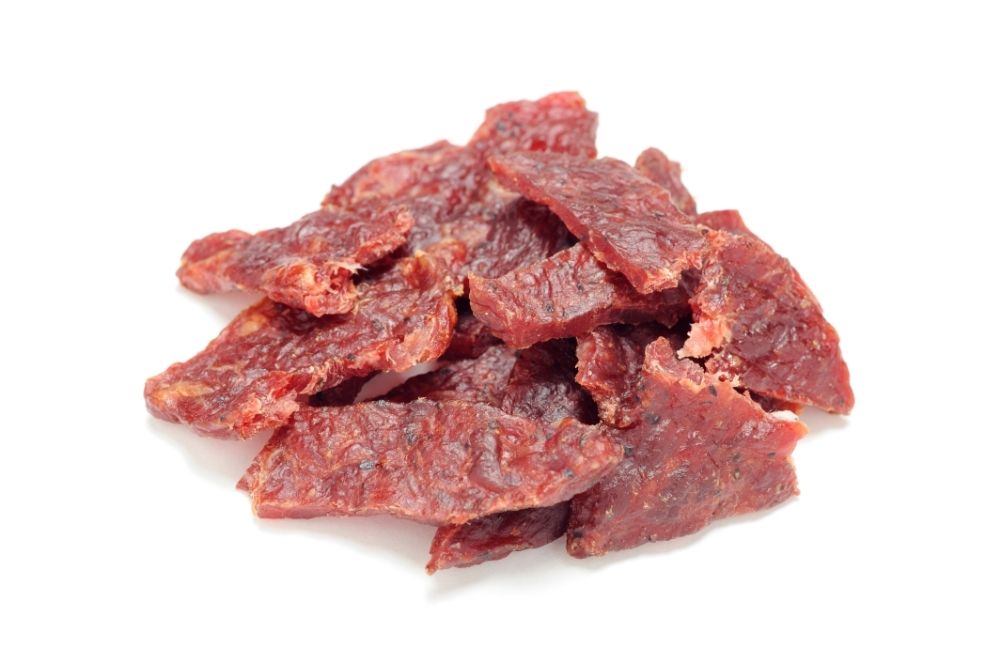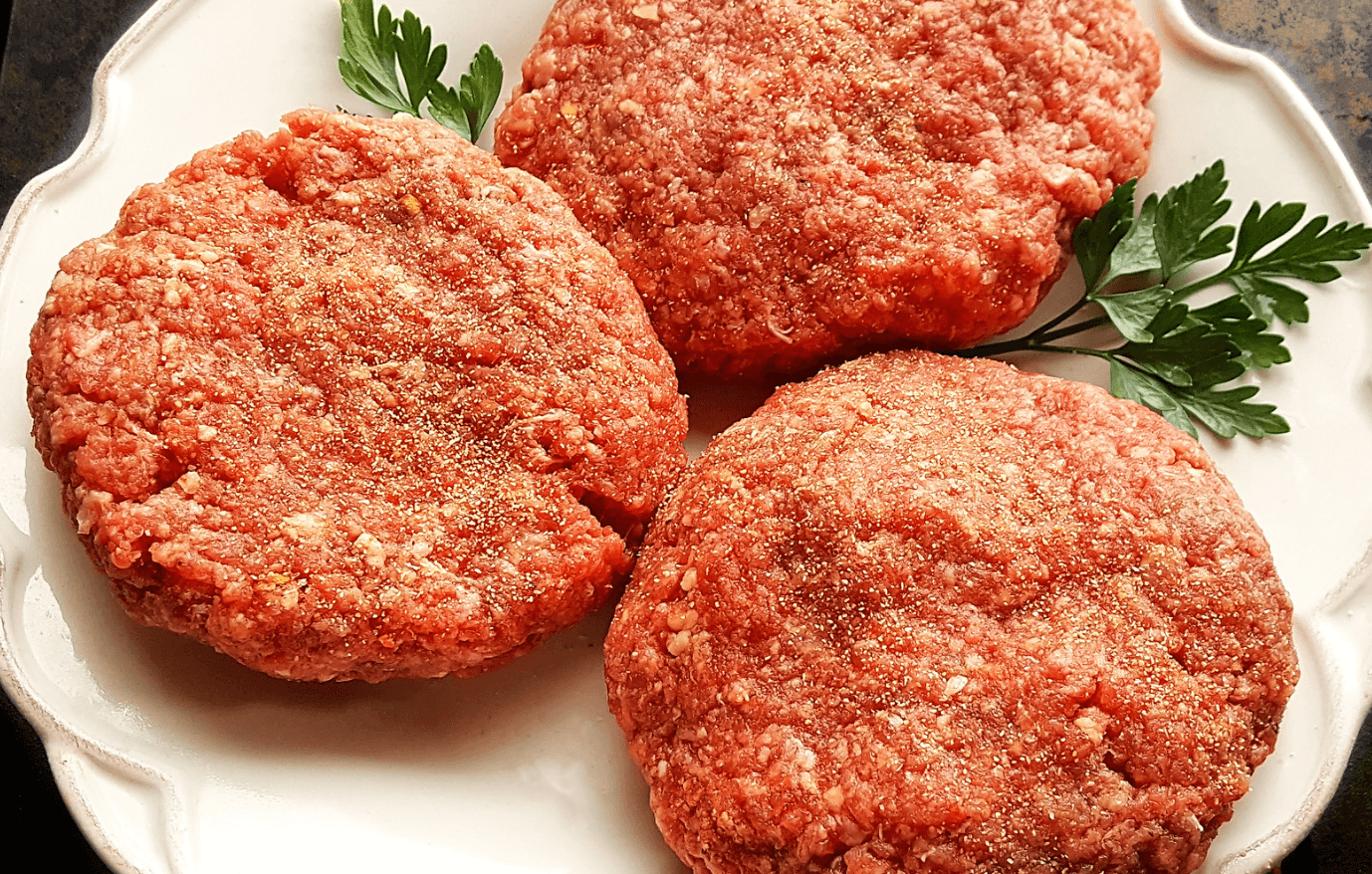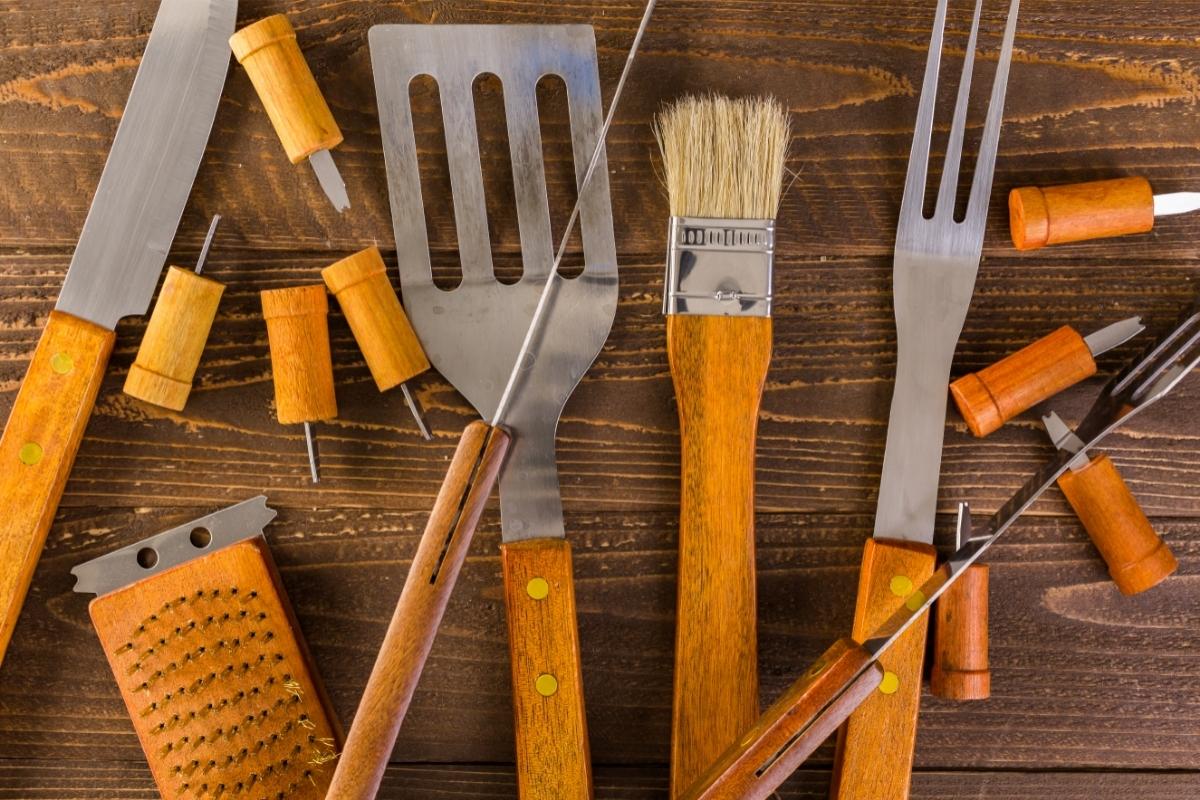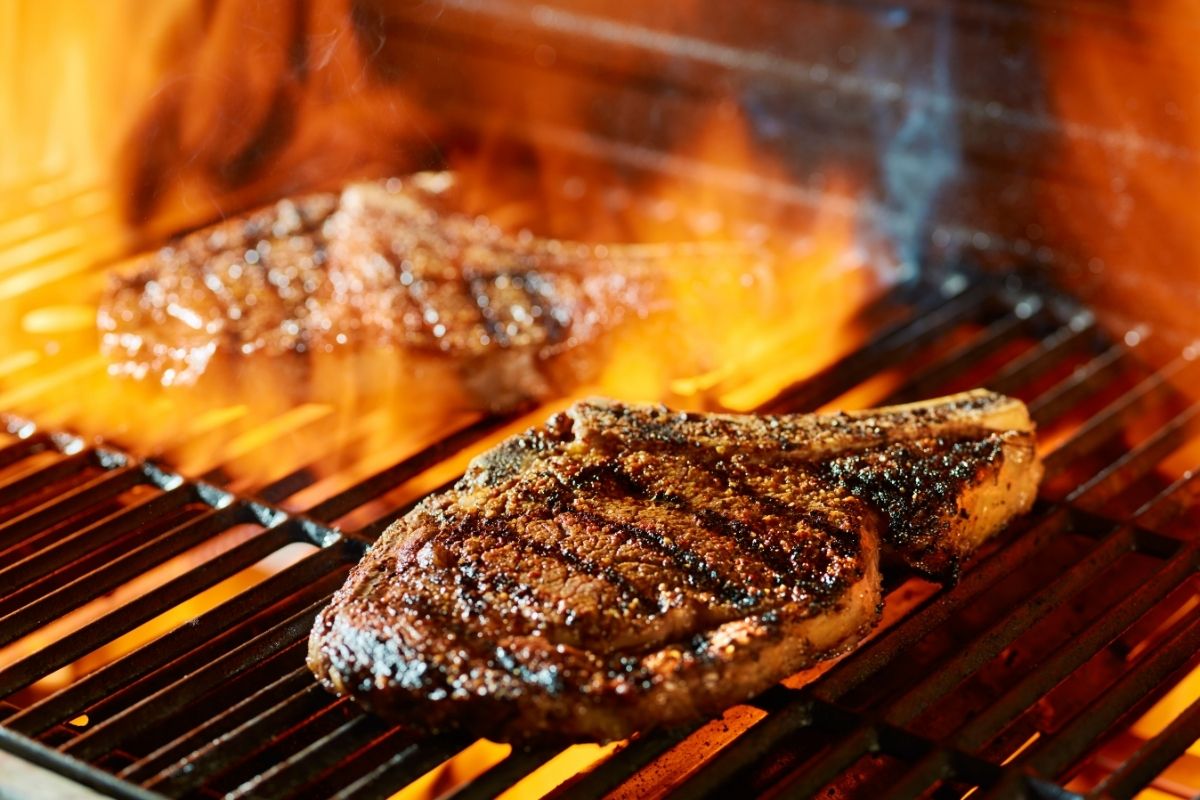Good news: the short answer is yes, dehydrating meat can kill bacteria and make your dehydrated food healthier. Dehydrating food as a preservation method has been around for centuries. It helps to prolong the lifespan of foods without the need for refrigeration, and it is a very inexpensive process to complete. It is ideal for food that will be transported, as most of the water weight will be removed, making your package lighter.
The dehydration process can reduce the moisture content of your food to between 5 and 20%. This helps to preserve your food as it limits the number of bacteria that can survive.
How Does Dehydrating Meat Kill Bacteria?
Dehydrating meat can make it shelf-stable and delicious—but it’s not just about drying it out. The key to making meat safe through dehydration is understanding how heat and moisture levels affect bacteria and parasites.
Bacteria need three main things to thrive: moisture, warmth, and a food source. Raw meat checks all those boxes. But when you dehydrate meat properly, you’re removing one of those pillars—moisture—which makes it much harder for bacteria to survive and multiply. In essence, dehydrating meat inhibits bacterial growth by creating an environment where bacteria can’t thrive.
However, simply removing moisture isn’t always enough to kill pathogens that are already present. That’s why the USDA has strict guidelines to ensure jerky and other dried meats are safe to eat.
USDA Guidelines for Safe Meat Dehydration
To safely dehydrate meat, the USDA recommends first heating raw meat to an internal temperature of 160°F (71°C) for beef and game, or 165°F (74°C) for poultry. This step ensures any harmful bacteria—like E. coli, Listeria, and Salmonella—are destroyed before the drying process begins.
Once pre-cooked, the meat should be dehydrated at a consistent temperature of at least 145°F (63°C) in a dehydrator or oven with proper airflow. This slow, low heat helps remove moisture while preventing bacterial regrowth.
Skipping the pre-cooking step and jumping straight into drying can leave you vulnerable to pathogens that survive in the meat’s core. Some dehydrators don’t reach high enough temperatures to fully eliminate bacteria unless the meat is pre-heated; you want to make sure you are only looking at high-quality dehydrators as a result.
|
Primary Rating:
4.5
|
Primary Rating:
4.4
|
Primary Rating:
4.6
|
If you’re using a marinade (especially one with salt or acid), it can help slow bacterial growth—but it doesn’t replace the need for proper heating and drying.
Can Dehydrating Kill Parasites Too?
Yes—if done properly. Trichinella spiralis, the parasite responsible for trichinosis, is often found in wild game like bear, boar, and deer. It can also occasionally be present in pork. Trichinella larvae can survive if meat is only dried without being pre-cooked to a high enough temperature.
Heating meat to at least 160°F kills Trichinella and prevents infection. Freezing is not always effective—especially for wild game—which is why thermal treatment is critical before dehydrating.
What Bacteria Is Found in Meat?
Raw meat is a playground for bacteria and parasites, especially if it’s handled or stored improperly. Here are some of the most common offenders:
- E. coli – Often found in undercooked beef, especially ground meat. Can cause severe food poisoning.
- Salmonella – Frequently found in poultry and can lead to gastrointestinal illness.
- Listeria – Can survive at refrigerator temperatures and is especially dangerous for pregnant individuals and immunocompromised people.
- Clostridium perfringens – Known for rapid growth in food kept at room temperature.
- Campylobacter – Common in raw chicken and can be destroyed with proper cooking.
Game meat also carries additional risks from parasites and fecal contamination. That’s why it’s especially important to follow strict food safety guidelines when making jerky from wild animals.
Food Safety Tips for Dehydrating Meat at Home
There are some important food safety tips to consider when dehydrating meat at home. Don’t let all of this discourage you: it’s best to just be safe and follow the recommended guidelines and process, instead of trying to rush anything.
- Never thaw meat at room temperature. Bacteria multiply rapidly in the “danger zone” between 40°F and 140°F.
- Thaw in the refrigerator and cook or dehydrate soon after thawing.
- Use whole cuts rather than ground meat for beginners—ground meat has more surface area for bacteria.
- Dehydrate within 2 days for ground meat or poultry, and within 3 to 5 days for whole muscle cuts.
- Use a food thermometer to verify internal temperatures before drying.
- Sanitize all surfaces and tools before and after handling raw meat.
Is Homemade Jerky Safe?
Absolutely—when made correctly, homemade jerky is both safe and delicious. Jerky has been a trusted method of meat preservation for centuries. But because it starts with raw meat, it’s essential to follow proper preparation and dehydration steps to reduce your risk of foodborne illness.
The most important step is heating the meat to a safe internal temperature before dehydrating. For beef and game, that’s 160°F, and for poultry, it’s 165°F. This kills off common pathogens like E. coli, Salmonella, and Listeria, which can survive the drying process if the meat isn’t fully cooked first.
After heating, your dehydrator should hold a steady temperature of at least 145°F. This is hot enough to safely remove moisture while preventing bacteria from growing during the drying phase.
One common mistake is assuming that simply drying meat at a low temperature is enough to make it safe. Many dehydrators—especially lower-end models—don’t get hot enough to fully kill bacteria if the meat is raw going in. That’s why the USDA recommends a two-step process: cook first, then dehydrate.
Want to enhance safety and flavor even further? You can marinate the meat in a salty or acidic brine beforehand, which can slow bacterial growth. However, marinades don’t replace cooking—so think of them as a flavor boost, not a safety step.
After dehydration, let the jerky cool at room temperature and blot off any remaining surface fat with paper towels. Then store it in an airtight container in a cool, dark place. For longer-term storage, the fridge or freezer is your best bet.
Here’s a quick breakdown of homemade jerky shelf life:
- Room temperature (airtight container): ~2 weeks
- Refrigerated: ~3 to 6 months
- Frozen: Up to 1 year. Grab yourself a high-quality chest freezer to maintain those long-run cost savings when making your own jerky.
If you follow these steps—proper heat treatment, consistent drying, clean handling, and smart storage—your homemade jerky will be safe, shelf-stable, and a total hit whether you’re camping, hiking, or just snacking at home.

What Are the Different Methods for Dehydrating Meat?
There are a few common ways to dehydrate meat at home, each with its own pros, cons, and safety considerations. Choosing the right method depends on your equipment, experience, and how much control you want over the process.
Electric Dehydrator (Recommended)
An electric dehydrator is the safest and most consistent method for making jerky and other dehydrated meats. These appliances use gentle heat and built-in fans to circulate warm air evenly across your meat, removing moisture without cooking it too quickly.
Look for a dehydrator with an adjustable thermostat that reaches at least 160°F. This ensures you can follow USDA guidelines for pre-heating and safe drying. Higher-end dehydrators also maintain more consistent airflow and temperature, which is crucial for food safety.
|
Primary Rating:
4.5
|
Primary Rating:
4.4
|
Primary Rating:
4.6
|
If you’re serious about jerky, a quality dehydrator is a worthy investment.
Oven Drying
Most household ovens can double as a dehydrator with a few simple tweaks. Set the oven to the lowest possible temperature—ideally around 140°F to 160°F—and leave the door slightly ajar to allow moisture to escape. Many built-in ovens from manufacturers like Cafe also have pre-set dehydration settings which makes it really easy to oven dry meat.
You’ll want to place the meat on wire racks set over baking sheets to promote airflow. Use a thermometer to check both the oven temperature and the internal temp of the meat during pre-cooking.
While not quite as efficient as a dehydrator, oven drying is a solid option if you’re just getting started or don’t want to buy new equipment.
Air Drying
Air drying involves hanging meat in a cool, shaded, well-ventilated area. While this method has been used for centuries, it’s not ideal for beginners or for most home jerky-making.
Air drying doesn’t always reach temperatures high enough to kill bacteria, and it relies heavily on weather conditions like temperature and humidity. Without strict control, your risk of spoilage or contamination increases significantly.
Unless you’re experienced with dry curing or building a custom curing chamber, we recommend avoiding air drying for meat.
Sun Drying
Sun drying is one of the oldest food preservation techniques, but it’s generally not recommended for dehydrating meat at home. While it works well for fruits like raisins and figs, meat requires consistent heat and protection from pests and airborne contaminants.
For sun drying to even be feasible, you’d need sustained ambient temperatures above 86°F and humidity below 60%—conditions that are difficult to maintain safely without specialized equipment or climate.
In short, sun drying is best left to dry, arid climates or traditional setups with centuries of experience behind them. Overall though, I’d recommend getting a quality electric dehydrator, just to reduce the hassle on your end and stay safe at the same time.
How to Minimize Bacterial Growth When Dehydrating Meat
Even though dehydrating meat reduces moisture and slows bacteria down, it doesn’t make contamination impossible. Safe jerky starts long before you turn on your dehydrator—it begins with smart handling and preparation.
Here are the key steps to minimize bacterial growth and keep your jerky safe and shelf-stable:
1. Practice Clean Handling From the Start
Before you even touch the meat, wash your hands thoroughly with antibacterial soap. Tie back long hair, and consider using gloves or a hair covering if you’re making a large batch.
Sanitize all cutting boards, knives, bowls, and dehydrator trays before and after use. Cross-contamination is one of the most common sources of foodborne illness, especially when working with raw meat.
2. Use Lean Cuts of Meat
Choose cuts of meat with minimal fat content. Fat doesn’t dehydrate well, and any residual fat left behind can spoil or go rancid over time—even if the jerky is stored properly.
Great lean options include:
- Top round
- Bottom round
- Eye of round
- Sirloin tip
- Wild game cuts (trimmed thoroughly)
Trim off all visible fat before slicing for best results. If you want to find quality meat purveyors, check out our roundup of the best mail order steak companies. We also highly recommend Snake River Farms and Porter Road.
3. Slice Thin and Consistent
The thinner and more uniform your meat slices are, the faster and more evenly they’ll dehydrate. Aim for slices around 1/8 to 1/4 inch thick.
This reduces the amount of time the meat spends in the “danger zone” (between 40°F and 140°F), where bacteria multiply rapidly. Thin slices also help prevent under-dried or chewy spots that can lead to spoilage.
A good rule of thumb: properly dried jerky should bend slightly but not snap when folded.
4. Marinate Safely (If You’re Using One)
Marinades are great for flavor and can even help slow bacterial growth thanks to the salt, vinegar, or acidic components they often contain.
But marinate safely:
- Always marinate meat in the refrigerator between 36°F and 40°F.
- Use a non-reactive container (glass or stainless steel).
- Never reuse marinade unless it has been boiled first.
After marinating, pat the meat dry with paper towels before dehydrating. Too much surface moisture can interfere with the drying process.
5. Work Quickly (But Don’t Rush)
Once meat is thawed or sliced, try to move it into the pre-cooking and drying stages within 24–48 hours (sooner for ground meat or poultry). The longer meat sits in your fridge, the more time bacteria have to grow.
FAQs: Does Dehydrating Meat Kill Bacteria?
Do you need to cook meat before dehydrating it for jerky?
Yes, the USDA recommends cooking meat to 160°F (or 165°F for poultry) before dehydrating. This kills harmful bacteria like E. coli and Salmonella that could survive the drying process alone.
Can you dehydrate raw meat without cooking it first?
Technically yes—but it’s not safe. Most home dehydrators don’t reach high enough temperatures to kill bacteria in raw meat, which can lead to foodborne illness.
What temperature kills bacteria in meat?
Bacteria are destroyed when meat reaches an internal temperature of 160°F for beef and game, and 165°F for poultry. Dehydrating alone won’t always get the meat hot enough unless it’s pre-cooked.
What temperature should a dehydrator reach for safe meat dehydration?
A quality dehydrator should be able to maintain at least 145°F with consistent airflow. This temperature is effective for drying pre-cooked meat safely.
Does dehydrating meat kill parasites like Trichinella?
Only if the meat is heated to 160°F before dehydrating. Parasites like Trichinella spiralis, often found in wild game and pork, can survive if the meat isn’t pre-cooked.
Is it safe to dehydrate meat in a regular oven?
Yes, as long as the oven can maintain a steady temperature of 140–160°F. Use a thermometer to verify the heat and leave the oven door slightly ajar for proper airflow.
How long does homemade jerky last at room temperature?
If stored in an airtight container, jerky can last about 2 weeks at room temperature. For longer shelf life, refrigerate or freeze it.
Can you make jerky without a dehydrator?
Yes—you can use your oven or even a smoker if it holds low, consistent temperatures. Just make sure you follow USDA cooking guidelines before drying.
What kind of meat is best for homemade jerky?
Lean cuts like top round, bottom round, sirloin tip, and eye of round are excellent for jerky. Trim all visible fat before slicing to prevent spoilage.
How thin should you slice meat for jerky?
Aim for slices between 1/8 and 1/4 inch thick. Thin, uniform slices dehydrate more evenly and help reduce the risk of bacterial growth.
Can you reuse marinade when making jerky?
No, never reuse marinade that has touched raw meat unless you’ve boiled it. Reusing raw marinade can spread harmful bacteria.
Do you need curing salt for homemade jerky?
It’s not required, but it adds an extra layer of protection. Curing salt with sodium nitrite helps prevent the growth of botulism-causing bacteria during storage.
What’s the best way to store homemade jerky?
Let jerky cool completely, blot off any surface fat, and store it in an airtight container. For longer shelf life, refrigerate or freeze it.
Can fat in meat cause jerky to spoil faster?
Yes—fat doesn’t dehydrate well and can go rancid during storage. Always use lean cuts and trim off as much fat as possible.
How do you know when jerky is done dehydrating?
It should feel dry but slightly pliable—it should bend, not snap. If you tear a piece, the inside should not look raw or moist.
Final Thoughts
Dehydrating meat is one of the oldest, most satisfying ways to preserve food—and when done right, it’s both safe and delicious. The key to success lies in following a few proven safety steps: pre-cooking your meat to the USDA-recommended internal temperature (160°F for beef or 165°F for poultry), maintaining a consistent dehydration temperature of at least 145°F, and practicing good food hygiene throughout the process.
If you want an extra layer of safety, consider using curing salt that contains sodium nitrite. It’s not required, but it can help prevent the growth of Clostridium botulinum, which is especially important if you’re storing jerky at room temperature for more than a few days.
After dehydration, let your jerky cool completely at room temperature. Blot it with paper towels to remove any surface fat, then store it in an airtight container:
- At room temperature: Safe for up to 2 weeks
- In the refrigerator: Lasts up to 6 months
- In the freezer: Can stay good for up to a year
When stored properly, homemade jerky is a high-protein, portable snack that you can feel good about. Whether you’re hiking the backcountry or just packing lunches, mastering safe dehydration opens the door to endless meat snack possibilities.
Discover more from Own The Grill
Subscribe to get the latest posts sent to your email.







